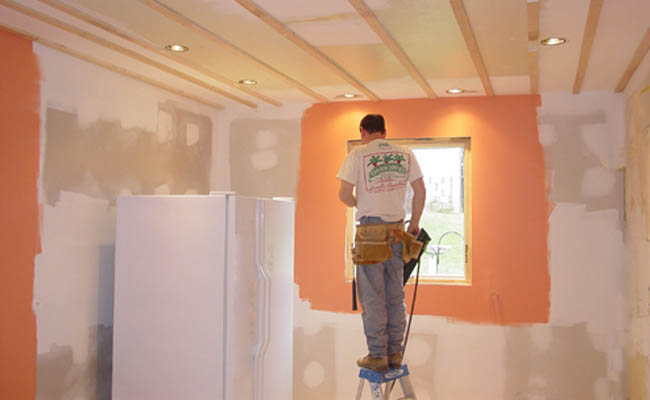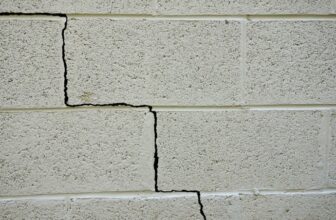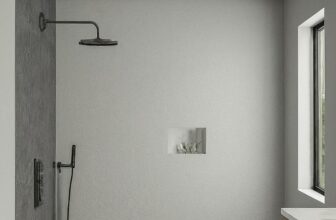
Renovating or improving your home can be an exciting proposition, especially if you have plans to live in the home for an extended period of time. The experiences gained, memories created, and quality of life realized over the years in the home are perhaps some of the most valued aspects of home ownership.
But home renovations can also be a perilous endeavor. The rewards are great but so is the possibility for opening your life to a potential cash-guzzling money pit or not getting the return on your investment you had hoped for upon starting the project (if this is the goal.)
The following are some basic tips that may shed some light on moving forward with those home renovations you may be considering and help in neutralizing any fear or misgiving associated with investing in improving your home.
Don’t Reinvent the Wheel, Do Some Research
A home renovation requires a great deal of thought and planning. If possible, eliminate as much guess-work as possible and speak to others who have engaged in similar renovation projects as the one you are considering. Take their advice, listen to their insight and make note of the shortcomings or problems they may have encountered as well as what was successful or worked out well.
Some important questions to ask others may include but aren’t limited to:
- How much did the project cost, and did it remain within budget?
- Were there building code or permit requirements?
- Was the work high quality and end result what you expected?
- Was the contractor skilled/competent? Did he or she show up for work regularly and on time? Could you or anyone you know recommend a reputable contractor?
- Were there any unforeseen problems?
All are important questions to ask before moving ahead.
Also, your interest in putting your cash towards home improvements should be weighed against the cost-versus-value basis of the project you are considering. Put simply, crunch the numbers and gauge the potential return of your project based on the initial money you are going to invest. Indeed, quality of life, not financial return, is likely the primary motivator for the home improvement though ROI (return on investment) is still a relevant question.
Sure, You Want the Gold-Plated Bathtub But…
Renovations are often split into two categories: wants and needs.
For example, renovating your kitchen to upgrade to fine Italian marble floors, granite counter tops and an ornate mosaic backs plash from the previous plastic laminate floors, counter tops and simple tile back splash is likely to equate to a want. Sure, these products are beautiful and exotic but often fail to provide any increase in quality or functionality relative to less expensive products that provide just the same thing.
On the other hand, updating an outdated, less energy-efficient appliance like a refrigerator or hot water heater, 30 year old cabinetry with faulty hinges, drafty, antiquated windows or a cracked foundation may equate to a need. Shoring up structural issues, fixing mechanical/functionality problems or improving energy efficiency should always take precedent over cosmetic improvements.
Additionally, in terms of design, it is also important to think “updated” as opposed to “trendy.” The reasoning behind this is if the renovation budget is spent on following current trends it only means that more money will be needed in the future when that look becomes outdated, which if history has taught us anything it will.
Styles and trends of the day can easily be achieved with furnishings and accessories. However, architectural features, kitchens,bathrooms, etc. should be updated for a modern usability, functionality and appeal that go well beyond the stylistic flavor of the month.
Indeed, if the budget is of no concern and you simply must have that swimming pool or sun-room opt for whatever products or additions you would like. But if the budget is a concern (and it usually is) stick with what renovations will make the home a more functional, livable and safe place to live for years to come.
Determine (Gulp) the Budget
Developing a budget can be one of the most daunting aspects of renovating a home, as many consumers underestimate the cost of their projects by not allocating the proper time and resources needed to complete the job. Thus, the cost grows higher and higher by the day and what was once thought to be a reasonable budget balloons or worse spirals out of control.
Some budgetary rules-of-thumb may include:
- Hire a professional contractor or estimator to help determine costs (materials, labor, time-frame etc.); get several estimates and compare and contrast
- Allot up to 5% of the home’s purchase price for the renovation (more or less depending on the extent of the project)
- Build in 10% of the total budget for overages which may occur (especially for material costs and labor which are prone to fluctuation)
- Avoid too many upgrades unless they are energy-savers (shop in advance for your pre-priced items and stick to your list; a seemingly harmless upgrade repeated a few dozen times can be a great way to exceed your budget)
- Be mindful of potential increases in your property tax and insurance costs due to the increased home value after your renovation is complete
- add time and money “cushions” within the budget for circumstantial events
Go Smaller, at Least Initially
This thought may vary depending on experience but it is often wise to choose smaller renovations first. Minor projects like adding a porch addition, wood deck or having vinyl siding added may require shorter time-frames and smaller budgets. Additionally, they may allow for learning about such things as budgeting, estimating costs, labor, materials etc.
Larger, more involved projects (like wing additions or major kitchen renovations) may require larger allotments of time for completion (anywhere from 2-9 months, sometimes longer) and the extended loss of the use of living spaces. Some major renovations even call for the occupants of the home to find residence elsewhere until the project is completed and costs can be enormous.
Be Patient, Be Realistic, Be Prepared
While certainly not always the case another renovation rule-of-thumb is to assume that your project will take longer and cost more money than initially planned or calculated for. In a perfect world this would not be the case but sometimes unforeseen circumstances arise that neither you or your contractor accounted for (think tearing down a wall in a bathroom only to find rotted, water-damaged studs or, heaven forbid, learning that the plumbing in your 1920’s era bungalow is not up to code and must be replaced.) While disconcerting these sorts of issues are not uncommon and require a certain understanding in order to get past them.
It is a good idea to have a back-up plan for worst-case scenarios and emergencies should one arise during the renovation. As mentioned add time and money “cushions” and be prepared to the best of your ability for any eventuality.
In life, as it is sometimes said, stuff happens and endeavors like home renovation are no exception (in fact, the construction industry may have had a part in actually coining the phrase!) But with a modicum of foresight, planning and patience it will all be worth it as you enjoy your improved home.
Tim Richmond writes about the mortgage industry, personal finance and home ownership. He currently writes for the Native American mortgage specialists 1st Tribal Lending and enjoys the study of American and world history.





